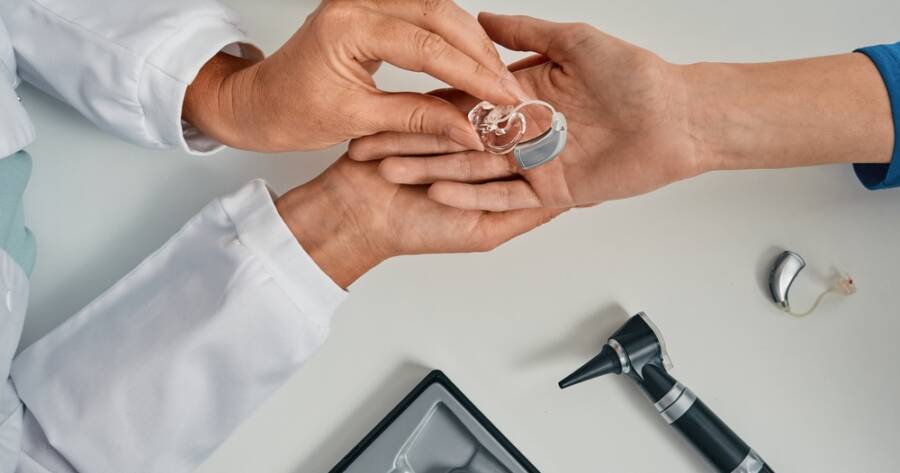Today’s hearing aids are packed with cutting-edge features designed to enhance sound quality, improve speech understanding, and seamlessly integrate with our digital lives. Advancements in hearing aid technology have revolutionized the way we address hearing loss.
What Are Hearing Aids?
Hearing aids are small, electronic devices designed to improve hearing by amplifying sound. They are typically worn in the ear or behind the ear and are customized to fit the individual’s unique hearing needs. Hearing aids work by converting sound waves into electrical signals, which are then amplified and delivered to the ear. This amplification helps individuals with hearing loss to better perceive and understand speech and other sounds.1
Hearing aids come in a variety of styles and technologies, each with its own advantages and disadvantages. Some of the most common types of hearing aids include:
- Behind-the-ear (BTE) hearing aids: These are the most common type of hearing aid and are worn behind the ear. BTE hearing aids are typically larger than other types of hearing aids, but they offer more power and flexibility.
- In-the-ear (ITE) hearing aids: These hearing aids are custom-molded to fit inside the ear. ITE hearing aids are smaller and more discreet than BTE hearing aids, but they may not be as powerful.
- In-the-canal (ITC) hearing aids: These hearing aids are even smaller than ITE hearing aids and are inserted deeper into the ear canal. ITC hearing aids are very discreet, but they may not be suitable for people with severe hearing loss.
Advanced Technology for Better Hearing
Hearing aid technology has advanced significantly in recent years, offering individuals with hearing loss a wide range of features and benefits.2 Some of the latest advancements in hearing aid technology include:
- Digital signal processing: This technology allows hearing aids to process sound more efficiently and effectively, resulting in improved sound quality and clarity.
- Directional microphones: These microphones help to focus sound from the front while reducing background noise, making it easier to understand speech in noisy environments.
- Wireless connectivity: Hearing aids can now be wirelessly connected to other devices, such as smartphones and televisions, allowing individuals to stream audio directly to their hearing aids.
- Rechargeable batteries: Many hearing aids now come with rechargeable batteries, eliminating the need to constantly purchase and replace batteries.
Experience Crystal-Clear Sound
Hearing aids can provide individuals with hearing loss the opportunity to experience crystal-clear sound and improve their overall quality of life. With the latest advancements in hearing aid technology, individuals can now enjoy:
- Improved speech understanding: Hearing aids can help individuals to better understand speech, even in noisy environments.
- Reduced listening effort: Hearing aids can reduce the amount of effort required to listen and understand speech, making it easier to communicate with others.
- Enhanced sound quality: Hearing aids can improve the overall quality of sound, making it easier to enjoy music, movies, and other audio content.
- Increased social participation: Hearing aids can help individuals to participate more fully in social activities, such as conversations, meetings, and group events.
Learn More About Hearing Aids
The evolution of hearing aids has come a long way from the bulky, rudimentary devices of the past. Today’s hearing aids leverage the latest technological advancements to provide superior sound quality, user comfort, and seamless connectivity with other digital devices. These innovations are not just about enhancing hearing but also about improving the overall quality of life for those with hearing loss.
With features like artificial intelligence, machine learning, and wireless integration, modern hearing aids offer a customized hearing experience tailored to individual needs.
